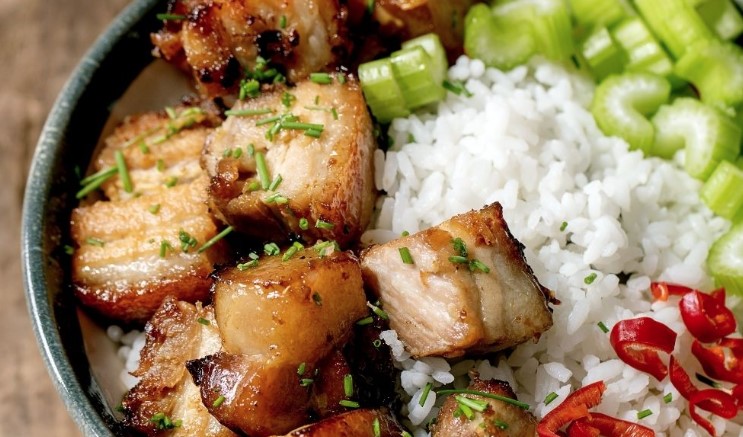Introduction: Southeast Asian Cuisine
Southeast Asian cuisine is known for its bold flavors, aromatic ingredients, and colorful presentation. It is a melting pot of different spices, herbs, and cooking techniques, reflecting the region’s diverse cultural influences. From the spicy curries of Thailand to the fresh salads of Vietnam, each country in Southeast Asia has its unique culinary traditions that have evolved over centuries. Cambodian cuisine, too, has its distinct flavor profile shaped by its geography, history, and cultural heritage.
Cambodian Cuisine: A Blend of Flavors
Cambodian cuisine is a blend of sweet, sour, salty, and bitter flavors, with an emphasis on aromatic spices and herbs. One of the defining characteristics of Cambodian food is the use of a wide range of herbs, including lemongrass, kaffir lime, garlic, galangal, and turmeric. Cambodian dishes are often cooked in coconut milk, which adds a creamy texture and sweet flavor to the food. Many Cambodian dishes also feature fermented fish sauce, which is a staple ingredient in Southeast Asian cooking.
The Role of Spices in Cambodian Cooking
Spices play a crucial role in Cambodian cuisine, giving it a complex and layered flavor profile. Some of the most commonly used spices in Cambodian cooking include cumin, cardamom, cinnamon, star anise, and cloves. These spices are often used in combination with garlic, ginger, lemongrass, and galangal to create aromatic pastes that form the base of many Cambodian dishes. One of the most famous Cambodian spice blends is Kampot pepper, which is known for its fruity, floral, and spicy flavor.
Cambodian Dishes: Noodles, Soups, and Curries
Cambodian cuisine features a wide variety of noodles, soups, and curries that are packed with flavors and textures. One of the most famous Cambodian dishes is Amok, which is a steamed fish curry that is flavored with coconut milk and spices. Another popular dish is Khmer noodles, which is a hearty soup made with rice noodles, pork, and vegetables. Other must-try Cambodian dishes include Lok Lak (stir-fried beef) and Bai Sach Chrouk (pork and rice).
Influences on Cambodian Cuisine: Chinese, Indian, and French
Cambodian cuisine has been influenced by several cultures throughout its history, including Chinese, Indian, and French. Chinese immigrants introduced noodles and stir-frying techniques to Cambodian cuisine, while Indian traders brought spices and curries. During the French colonial era, French ingredients and cooking techniques were introduced to Cambodia, leading to the creation of dishes like Bai Sach Chrouk. These cultural influences have shaped Cambodian cuisine into a unique fusion of different flavors and cooking styles.
Cambodian Desserts: Sweet Treats with Unique Flavors
Cambodian desserts are known for their sweet and savory flavors, often featuring ingredients like coconut milk, black sesame, and palm sugar. One of the most popular Cambodian desserts is Num Krouch, which is a steamed cake made with rice flour, coconut milk, and banana. Other Cambodian desserts include Tuk Trey (fish custard), Thnot Cha (palm sugar drink), and Chak Anggou (sticky rice with mango).
Comparison with Thai, Vietnamese, and Laotian Cuisines
While Cambodian cuisine shares some similarities with its neighboring countries like Thailand, Vietnam, and Laos, it also has its distinct flavor profile. Cambodian dishes tend to be less spicy than Thai cuisine and less herbaceous than Vietnamese cuisine. Cambodian curries are often milder and sweeter than Thai curries, while Cambodian noodles are thicker and heartier than Vietnamese noodles.
Conclusion: Exploring the Richness of Cambodian Food
Cambodian cuisine is a wonderful representation of the region’s cultural diversity and culinary heritage. Its bold flavors, unique spice blends, and delicious sweet treats make it a cuisine worth exploring. By trying out some of the famous Cambodian dishes and desserts, one can truly experience the rich and vibrant flavors of this beautiful country.

